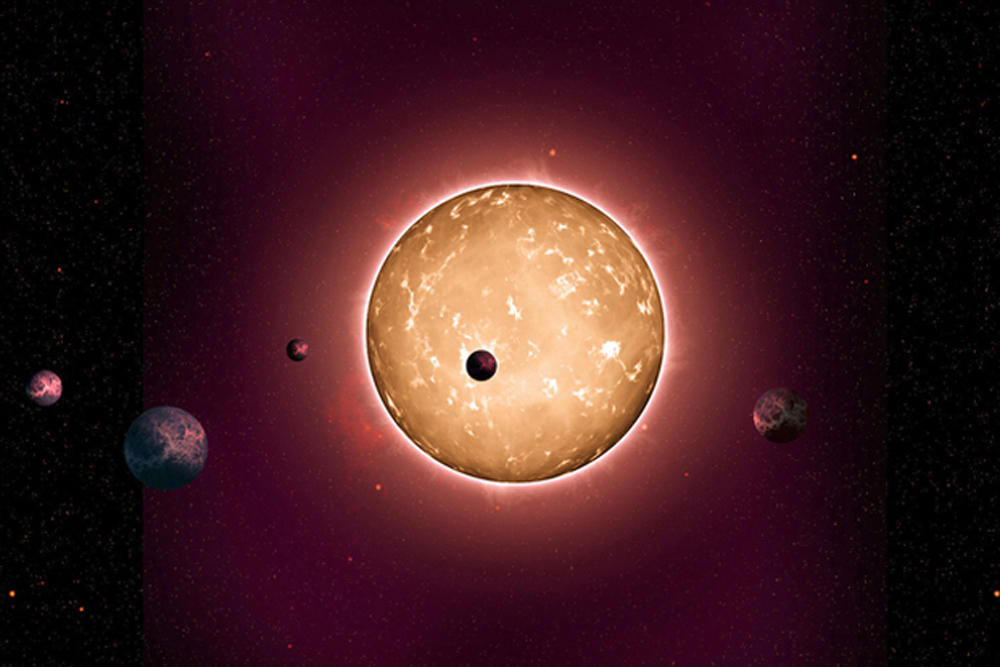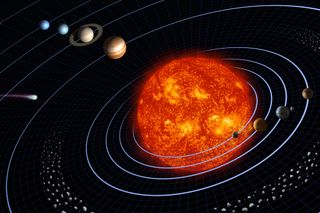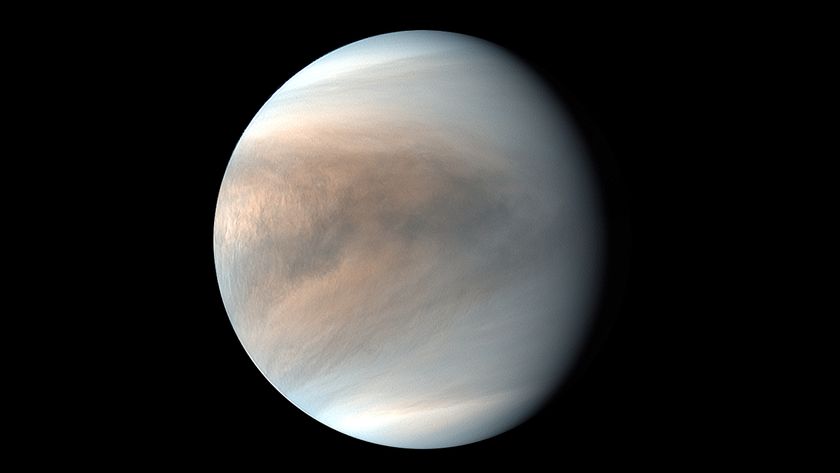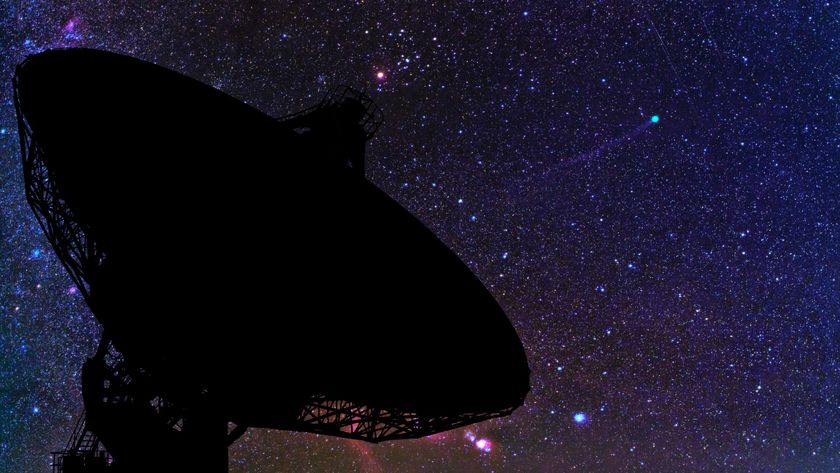Ancient Exoplanets Raise Prospects of Intelligent Alien Life

Can life survive for billions of years longer than the expected timeline on Earth?
As scientists discover older and older solar systems, it's likely that before long we'll find an ancient planet in the habitable zone. Knowing if life is possible on this exoplanet would have immense implications for habitability and the development of ancient life, one researcher says.
In January, a group led by Tiago Campante — an astroseismology or "starquake" researcher at the University of Birmingham in the United Kingdom — announced the discovery of five tiny, likely rocky worlds close to an ancient star. The star is named Kepler-444 after NASA's planet-hunting Kepler mission, which first made a tentative discovery. [10 Exoplanets That Could Host Alien Life ]
Campante's contribution was narrowing down the age of Kepler-444 and its planets to an astounding 11.2 billion years old. That's nearly 2.5 times as old as our solar system. None of Kepler-444's planets are thought to be habitable, as they circle the star at a scorchingly close distance. However, Campante said that finding those planets is a great stride forward in the search for older, habitable worlds, and the best may be yet to come.
"This system gives us hope that there are other habitable worlds that we can’t detect because we don’t have enough observing timespan yet," Campante said.
Upcoming observatories could change that, he added. Whether life can live for billions of years, however, is pure speculation.
"If intelligent life develops in a system as old as this one, would it still exist or would they extinguish themselves?" Campante asked.
Get the Space.com Newsletter
Breaking space news, the latest updates on rocket launches, skywatching events and more!
Results from Campante's paper were published in January in The Astrophysical Journal, in a paper entitled, "An Ancient Extrasolar System with Five Sub-Earth-Size Planets."

Surprise composition
The researchers observed Kepler-444 with the W.M. Keck telescope near the summit of Mauna Kea, Hawaii to learn more about its chemical composition.
The star is deficient in iron but is rich in what are called "alpha elements," such as silicon, carbon, nitrogen and oxygen. These elements were all formed in the first stellar explosions of our universe, when older stars ran out of fuel to burn and spread these elements far and wide. These elements make the composition of the star's orbiting planets a bit of a surprise, Campante said.
Normally, scientists expect that "terrestrial" planets — rocky ones such as Mercury, Venus or Earth — have lots of iron in their interiors. This discovery shows it's also possible to create planets that are primarily made of alpha elements, he said. This means that rocky planets may be able to form in multiple ways, making them more common across the universe.
The Kepler-444 system is not much like ours, though. Kepler-444 is slightly smaller than our sun, and its planets orbit extremely close in. The habitable zone in this system starts around 0.4 astronomical units (AU), or Earth-sun distances. Yet the outermost planet huddles at only 0.08 AU. That's roughly five times closer than Mercury is to our own sun.

Widening the search
There are few known solar systems that are as old as Kepler-444. One huge gas giant planet informally known as "Methuselah" was discovered in the early 2000s. When the finding was announced in 2003, astronomers said the planet was roughly 12.7 billion years old, more than twice Earth's age. (Our solar system formed about 4.5 billion years ago.)
Last year, astronomers said they had found two planets orbiting the 11.5-billion-year-old Kapteyn’s Star, which is named after a Dutch astronomer. Both Kapteyn b and c are likely of a size between super-Earths and mini-Neptunes, Campante said.
Another ancient solar system was found orbiting Kepler-10, which is roughly 10.6 billion years old, but the two planets were also not considered to be habitable. At the time of their discovery in 2011, the researchers described the planets as "a hot rocky world and a solid Neptune-mass planet."
It will take more powerful observatories to find more Earth-like worlds, Campante said, but luckily two are on their way shortly. NASA plans to launch the Transiting Exoplanet Survey Satellite (TESS) in 2017, and the European Space Agency will send PLATO (PLAnetary Transits and Oscillations of Stars) up in 2024. Campante is involved in the planning of PLATO.
Like Kepler, PLATO will search for Earth-like worlds around sun-like stars, but it will sport a wider field of view and a more sensitive receiver. Both features could potentially detect more worlds, Campante said. TESS, meanwhile, will focus on stars closer to Earth, making them easier to track with ground-based observatories.
This story was provided by Astrobiology Magazine, a web-based publication sponsored by the NASA astrobiology program. Follow Space.com on Twitter, Facebook and Google+.
Join our Space Forums to keep talking space on the latest missions, night sky and more! And if you have a news tip, correction or comment, let us know at: community@space.com.

Elizabeth Howell (she/her), Ph.D., was a staff writer in the spaceflight channel between 2022 and 2024 specializing in Canadian space news. She was contributing writer for Space.com for 10 years from 2012 to 2024. Elizabeth's reporting includes multiple exclusives with the White House, leading world coverage about a lost-and-found space tomato on the International Space Station, witnessing five human spaceflight launches on two continents, flying parabolic, working inside a spacesuit, and participating in a simulated Mars mission. Her latest book, "Why Am I Taller?" (ECW Press, 2022) is co-written with astronaut Dave Williams.



